

Indiana 1895
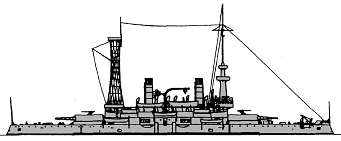
Indiana 1912
| No | Name | Yard No | Builder | Laid down | Launched | Comm | Fate |
| BB1, 3.1919- BC1 | Indiana, 3.1919- Coast Battleship No1 | 270 | Cramp, Philadelphia | 7.5.1891 | 28.2.1893 | 20.11.1895 | sunk as target 1.11.1920 |
| BB2, 3.1919- BC2 | Massachusetts, 3.1919- Coast Battleship No2 | 271 | Cramp, Philadelphia | 25.6.1891 | 10.6.1893 | 10.6.1896 | stricken 11.1920 |
| BB3 | Oregon | 18 | Union Iron Wks, San Francisco | 19.11.1891 | 26.10.1893 | 15.7.1896 | stricken 11.1920 |
|
Displacement normal, t |
10288 |
|
Displacement full, t |
11688 |
|
Length, m |
107.0 |
|
Breadth, m |
21.1 |
|
Draught, m |
7.32 mean |
|
No of shafts |
2 |
|
Machinery |
2 VTE, 6 cylindrical boilers |
|
Power, h. p. |
9000 |
|
Max speed, kts |
15 |
|
Fuel, t |
coal 1640 |
| Endurance, nm(kts) | 5640(10) |
|
Armour, mm |
Harvey and nickel steel - belt: 457 - 102, bulkheads: 356, deck: 70 - 76, barbettes: 432, main turrets: 432 - 51, secondary turrets: 152 - 51, secondary battery: 127, casemate: 127, CT: 254 |
|
Armament |
2 x 2 - 330/35 Mk I, 4 x 2 - 203/37 Mk IV, 4 x 1 - 152/40 Mk IV, 20 x 1 - 57/40 Hotchkiss Mk I/II, 6 x 5 - 37/20 Hotchkiss Mk I, 6 - 450 TT (4 beam, 1 bow, 1 stern, 16) |
|
Complement |
473 |
Project history: Authorized under the Act of 30.6.1890. First series-built battleships of the 'New Navy', and not very successful as too much was attempted on a very limited displacement. Freeboard was only 3.5m forward at legend draught and did not allow tthem to be considered effective ocean-going ships. Turrets were originally unbalanced with hydraulic training in Oregon and steam in the other two. The 330mm axis height above Iwl was 5.4m but the 203mm turrets, two on either beam, were carried high (gun axis 7.6m), and the 152mm guns were amidships in sponsoned upper deck.
Ship protection: Main belt had 45.7m length and 2.28m height (0.91m over and 1.37m under waterline) and was connected with main gun barbettes by 356mm angled bulkheads. It was 457mm thick from upper edge to 0.3m under waterline and tapered to 203mm at lower edge. Ship ends between stems and bulkheads were protected by 102mm belt tapered to lower edge to 64mm. Upper belt was 127mm thick. 70mm armoured deck over citadel was flat and connected with upper edge of main belt. It was sloped and 76mm thick at ship ends. Main gun turrets had 432mm sides and 51mm crowns. Secondary turrets had 152mm sides and 51mm crowns. 152mm guns had 127mm protection, 57mm and 37mm guns were protected by 51mm armour. Conning tower had 254mm sides and 178mm tube.
Modernizations: 1905-1908, all: - 4 x 1 - 152/40, 10 x 1 - 57/40, 6 x 5 - 37/20, 6 - 450 TT; + 12 x 1 - 76/50 Mk III/V/VI; cylindrical boilers were replaced by 8 Babcock & Wilcox, the 330mm turrets being partially balanced.
1907-1908, all: cage mainmast was installed.
1919, all: - 8 x1 - 76/50.
Naval service: Indiana and Massachusetts were reclassified as coast defence battleships in 1919. Oregon became a museum ship in January, 1924. Two first ships were sunk on exercises as targets 1.11.1920 and 6.1.1921 respectively. Oregon was sold for BU in December, 1942 but later works were stopped and in July, 1944 she was towed to Guam as ammunition hulk. Later she breaking adrift in a typhoon and sold in March, 1956.
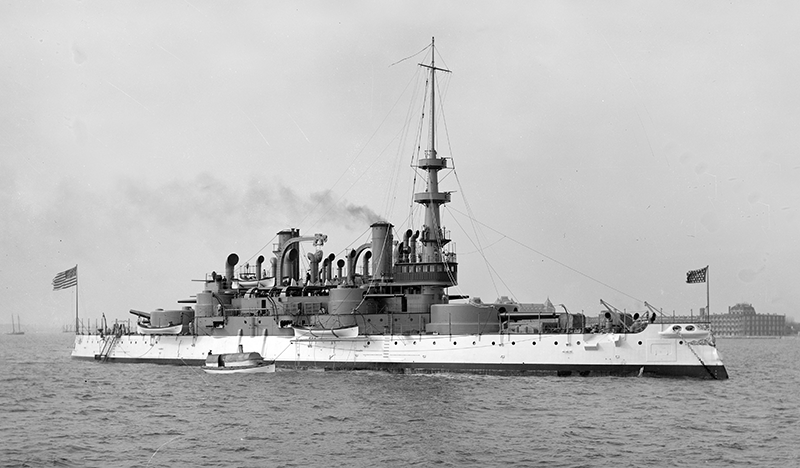
Indiana
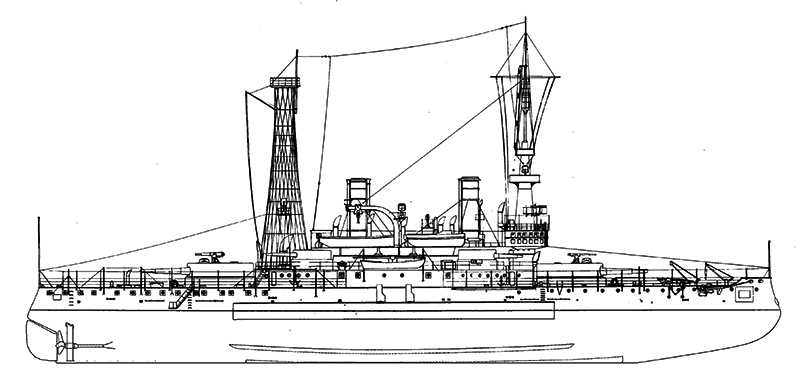
Massachusetts 1917 (Naval History and Heritage Command)
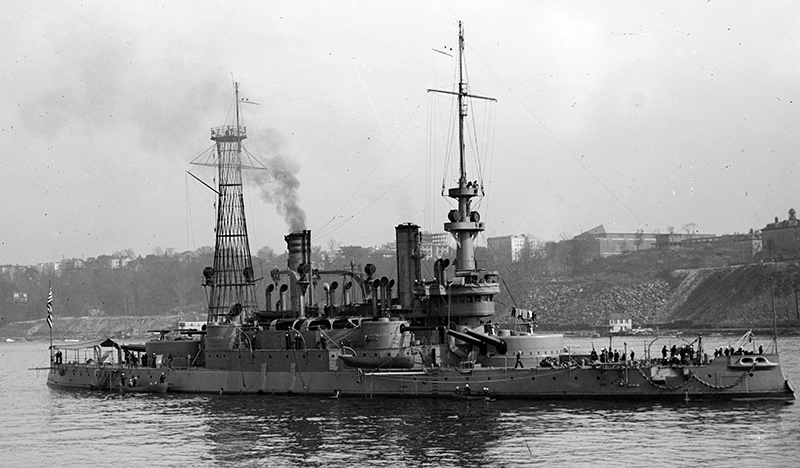
Indiana during WW1
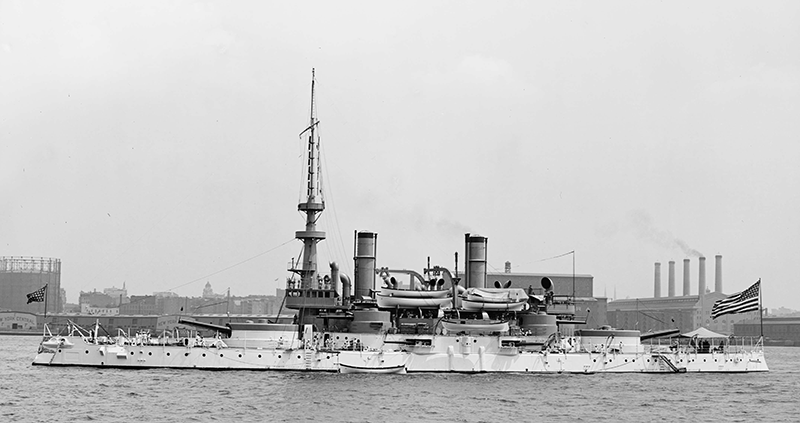
Massachusetts 1896
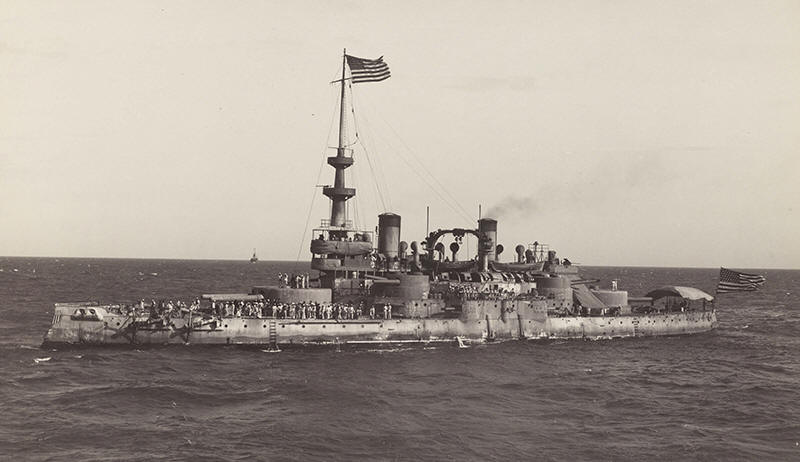
Oregon returning from Cuba in 1898
© Navypedia, 2020